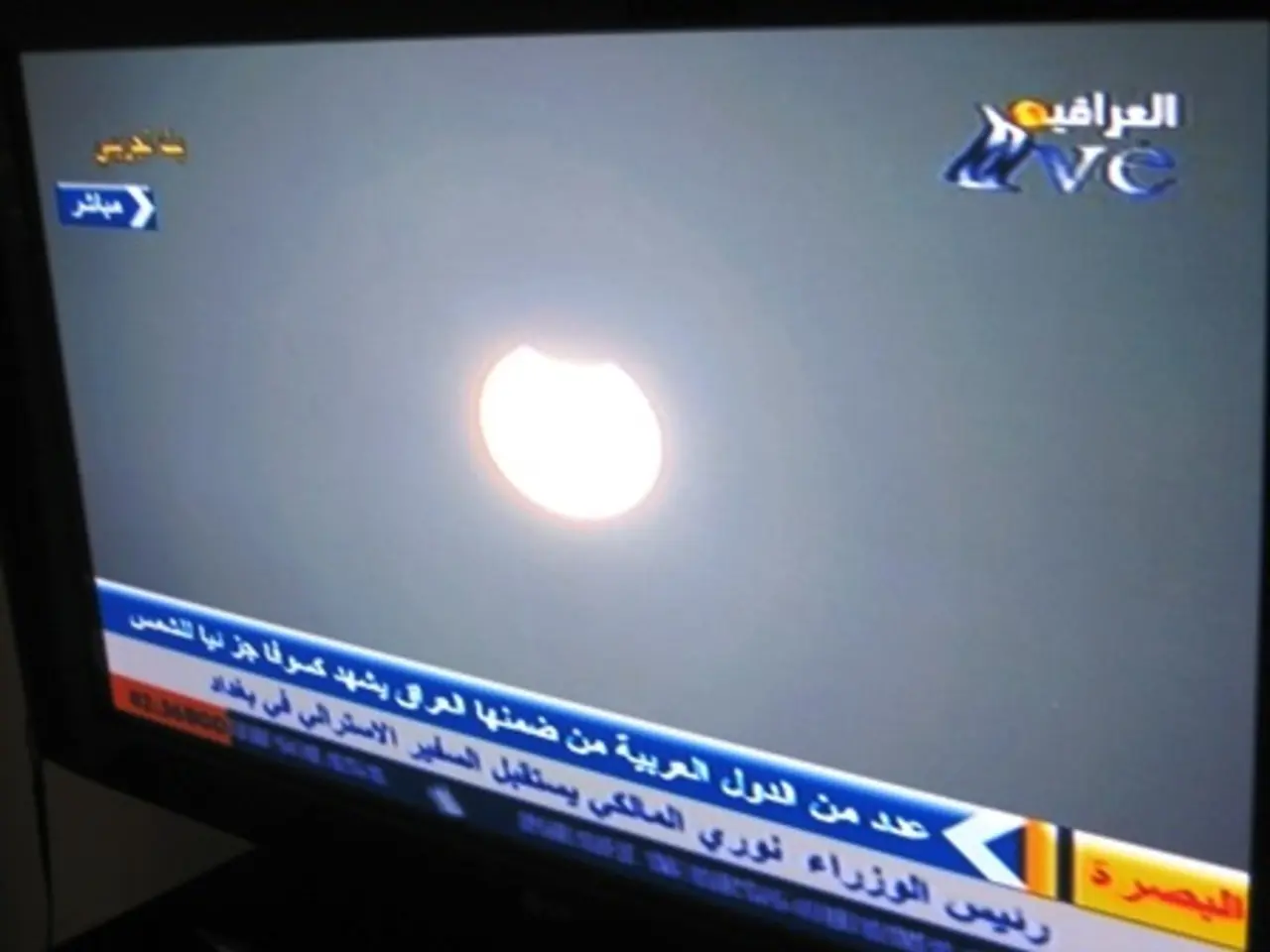Satellite distribution offers a sustainable alternative to Internet Protocol Television (IPTV)
In the ever-evolving world of television, a recent study has shed light on the energy consumption and environmental impact of different TV reception methods. The findings suggest that satellite television remains a viable and sustainable choice, particularly in Europe.
According to the study, DTT (Digital Terrestrial Television) is the most efficient method, consuming 14 Wh per viewed hour, followed by DTH satellite at 19.5 Wh, compared to 109 Wh for Over-The-Top (OTT) and 153 Wh for Internet Protocol Television (IPTV).
In Germany, DTH satellite is the second most-used TV reception method, with 16.4 million households (representing 42% of TV households) relying on it. Interestingly, the market share of DTH satellite in Germany has remained relatively stable, with a slight increase from 45.5% in 2022 to 45.0% in the latest data.
Aymeric Genty, President of Eutelsat's Video Business Unit, commented that satellite delivers around one-third of all TV viewing hours in European homes and is valuable in terms of reach, reliability, and sustainability.
The study also found that over 99% of electricity use in satellite delivery comes from in-home equipment such as LNBs, decoders, and amplifiers. However, the good news is that optimizing in-home reception models could reduce satellite's energy and GHG impacts by up to two- or three-fold.
Emissions from satellite launches were negligible, accounting for only 0.02 g CO2e per viewed hour. On the other hand, higher grid carbon factors in North America and Latin America mean actual emissions per viewing hour are 8 g CO2e in North America and 4.25 g CO2e in Latin America, compared to Europe.
Projections suggest unit energy consumption for satellite delivery will rise slightly in Europe by 2035, from 19.5 Wh to 20.4 Wh per viewed hour. However, emissions are expected to decrease significantly due to reductions in grid emission factors, from 4.7 g CO2e to 1.3 g CO2e per hour by 2035 in Europe.
In a notable collaboration, Space Norway and Telenor Nordics have entered an agreement to provide IPTV and OTT streaming services in Norway, Sweden, and Finland. The partnership aims to deliver reliable, advanced TV services and a wider range of digital entertainment to the Nordic pay-TV market. The partnership combines Space Norway's content processing capabilities with Telenor's end-user solutions.
The LoCaT Project has found satellite to be 6 to 8 times more efficient than IP-based methods for television distribution. This collaboration and the findings from the LoCaT Project underscore the potential of satellite technology to contribute to a more sustainable future for television.
In conclusion, the study and collaborations such as the one between Space Norway and Telenor Nordics highlight the continued importance and sustainability of satellite television in Europe and beyond. As we move towards a more sustainable future, it is clear that satellite technology will continue to play a crucial role in the television landscape.
Read also:
- EPA Administrator Zeldin travels to Iowa, reveals fresh EPA DEF guidelines, attends State Fair, commemorates One Big Beautiful Bill
- Musk announces intention to sue Apple for overlooking X and Grok in the top app listings
- Cybertruck's Disappointing Setback, Musk's New Policy, Mega-Pack Triumphs, Model Y's Anticipated Upgrade Prior to Refresh (Week of January 25 for Tesla)
- Innovative Company ILiAD Technologies Introduces ILiAD+: Boosting Direct Lithium Extraction Technology's Efficiency Substantially




